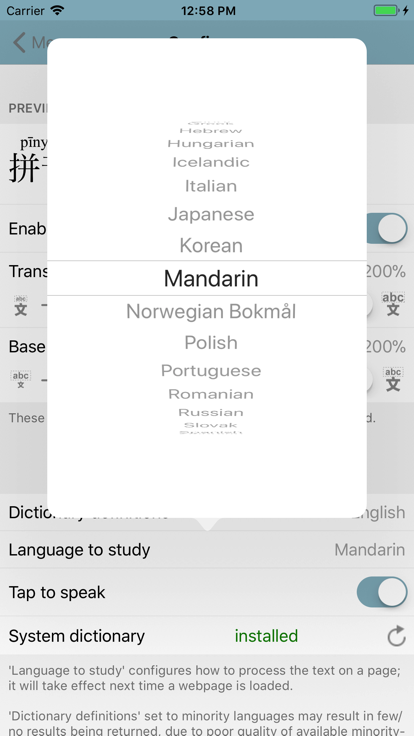
Click any of the links below to scroll down to the given section.
LinguaBrowse can process web-pages in various ways to help you read them:
Different languages require different processing, however, so it is necessary to configure LinguaBrowse for the language that you are trying to study so that it can process the text correctly.
Please go to the Configure menu (accessed by pressing the cog symbol on the main screen's toolbar), and set the 'language to study' to be the language that you are trying to study, eg. 'Mandarin'.

Web pages will be processed as per the settings in your Configure menu. For any language not using Roman characters, if you turn on 'enable transcriptions', phonetic transcriptions will be processed and inserted for each word on the page. The only disadvantages of enabling transcriptions include the extra processing time required (which can be noticeable for large texts), and changes made to the text layout of the page (necessary for fitting extra lines of words in).
Here's how a Chinese-language web-page may look before processing, and after processing (with 'enable transcriptions' turned on):
| Web-page in Safari (unprocessed) | Web-page processed by LinguaBrowse |
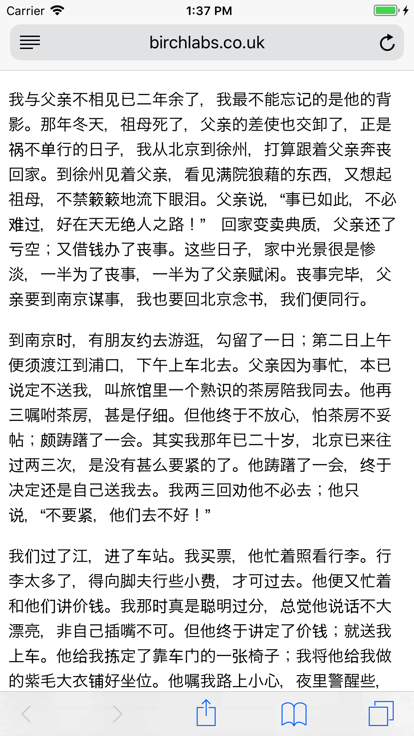
|
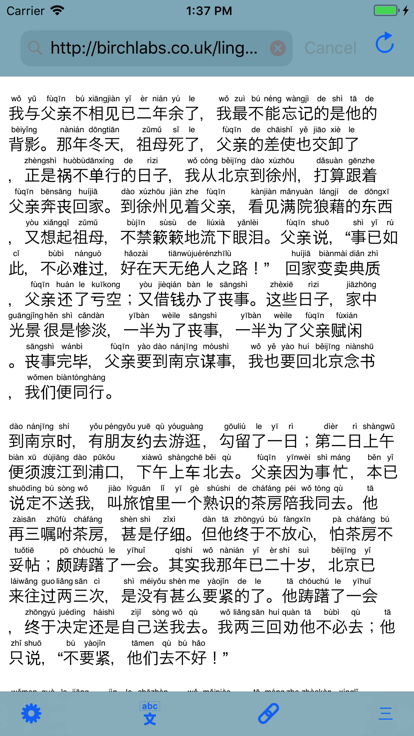
|
If transcriptions are enabled, you can hide or show them at any time by pressing the following button in the toolbar at the bottom of the screen:

| Transcriptions: visible | Transcriptions: hidden |

|
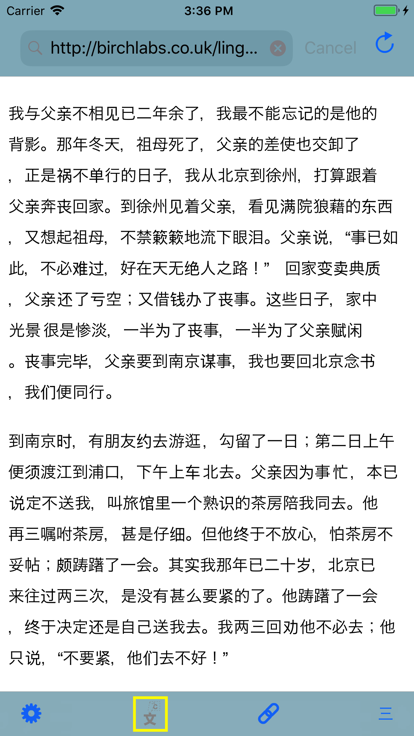
|
Note how the transcriptions (and even the main text) are a little too small to read easily. If necessary, you can increase their size in the Configure menu by adjusting the 'transcriptions size' slider. Normally, you'll want to increase the 'base text size' by an equal amount in turn.
| Increasing the base text size | Increasing the transcriptions size |
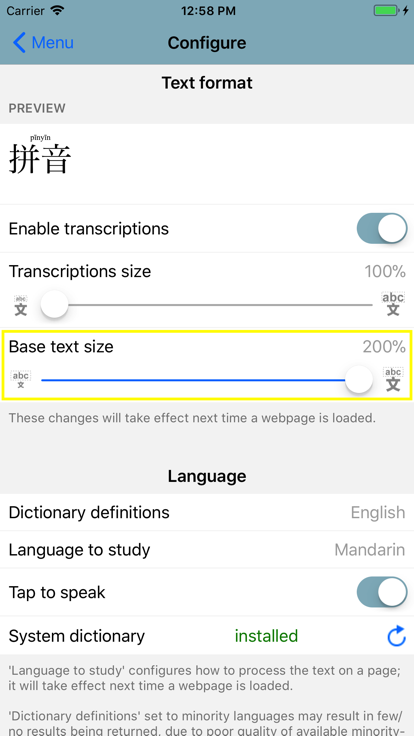
|
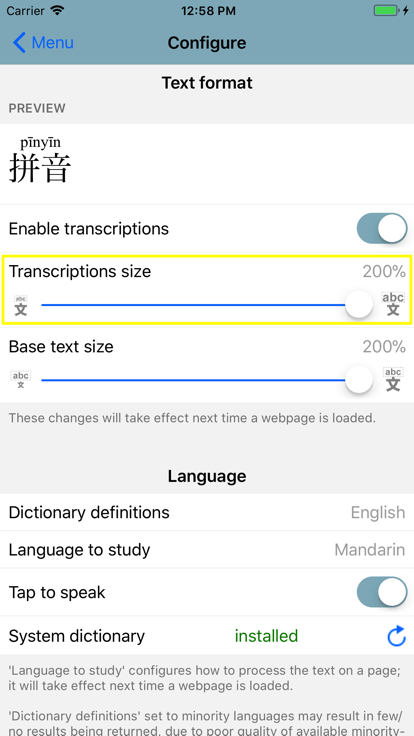
|
See how the text will look on-page as a result of these changes:
| After increasing just the base text size | After also increasing the transcriptions size |

|

|
Here, we'll demonstrate tap-to-define. Note: This step requires dictionaries to have been configured beforehand (see Dictionaries section; in this example, we'll have 'dictionary definitions' set to 'English', and will have the Simplified Chinese↔English system dictionary installed). Tap on the word '忘记 (wàngjì)' and you'll see a beautiful system dictionary pop up:
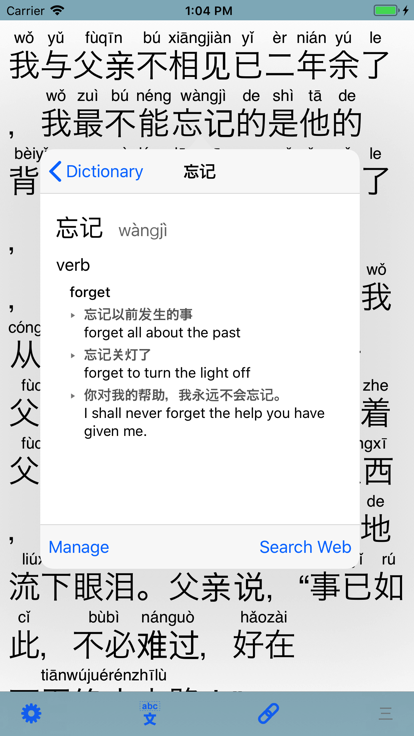
The only bilingual Chinese dictionary that Apple have licensed is for Simplified Chinese, but LinguaBrowse will convert traditional characters to simplified when necessary to make use of this dictionary!
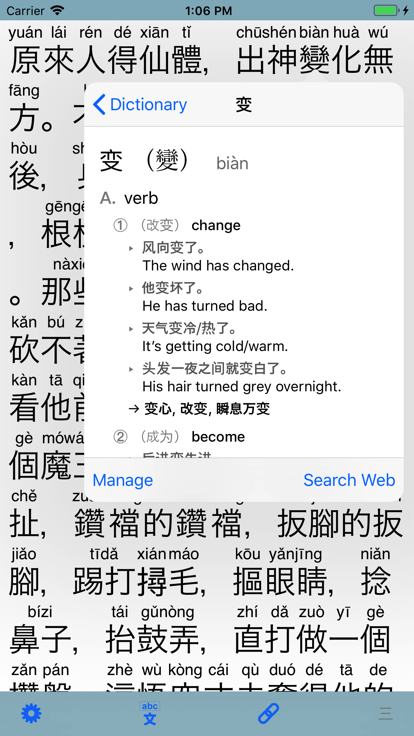
If a word is not found in the system dictionaries, lookup will be attempted in an online dictionary as a fallback.
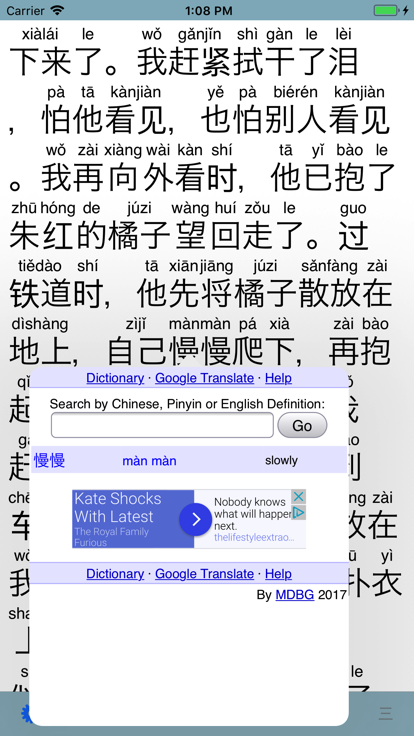
Sometimes you'll want to define words that are embedded in a link. To prevent LinguaBrowse from following the link, press the 'link toggler' button:


Please note that disabling links may not work for Javascript-based links.
If a Text-To-Speech (TTS) voice is available for the language selected as the 'language to study' in the Configure menu, then tapping a word will cause it to be spoken at the same time as the dictionary lookup. This feature can be turned on/off in the Configure menu under Language > Tap to speak.

Tap-to-speak may sometimes not speak exactly the same pronunciation as is transcribed. Eg. in Mandarin, tones may differ if multiple possibilities exist. This is because the TTS tools are independent from the text processing (tokenising) tools, and therefore may determine pronunciations differently (not least because I don't pass them the full sentence's context - except for Japanese, where I have a workaround!).
For agglutinative languages like Japanese, tap-to-speak may also only speak the stems of words because of the way they are tokenised; I hope to improve upon this in the future, but it is a complex feature to deliver.
One of the main features of LinguaBrowse is 'tap-to-define', that is to say, you can tap a word to bring up a popup dictionary to define it. There are two types of dictionary:
Wherever possible, I recommend that you use a system dictionary! Although I must say that the online dictionaries for Chinese↔English (MDBG's CEDICT) and Japanese↔English (jisho.org) are superb.
Online dictionaries are available in a wide variety of language pairs (eg. Bulgarian↔Czech), which LinguaBrowse provides by opening a popup viewing a dictionary website; usually eudict.com. However, the dictionaries of certain language pairs may be very underpopulated (the eudict.com dictionaries may contain anywhere between 1,000 to 100,000 words, and I haven't yet excluded any of the underpopulated ones!). So although the idea of a Japanese↔Polish dictionary may be very attractive to Polish speakers learning Japanese, they may regrettably find that a dictionary for a more 'popular' language pair such as Japanese↔English will have more entries and therefore be more useful. Basically, your mileage may vary for any bilingual dictionary that doesn't have English as one of the pair!
For the best experience, we recommend installing the appropriate system dictionary from Settings > General > Dictionary, and ideally remove all others. We recommend having just one dictionary installed at any time, as explained below.
Warning: dictionaries are downloaded over the internet, and may be 100MB+ in size, so if you have a limited data allowance, please ensure that you are connected to WiFi any time that you download them.
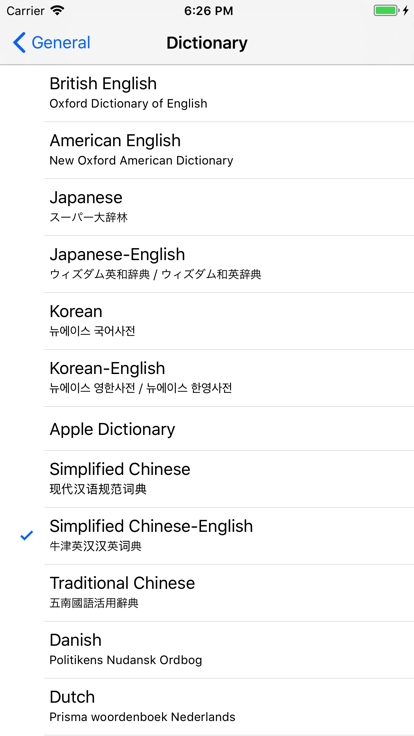
Whether you use a system dictionary or choose to rely upon the online dictionaries, please first select the language that you wish definitions from the dictionary to be displayed in, as shown below.

You can confirm whether you have installed the right dictionary by clicking the 'refresh' button next on the 'System dictionary' row in the Configure menu. If the row is not visible at all, then no system dictionary is available for your chosen language pair; this may also depend on your version of iOS (eg. Portuguese↔English and Russian↔English are only available starting from iOS 11!).
Beware of having multiple system dictionaries installed, as LinguaBrowse has no control over which dictionary/dictionaries the system performs the lookup in; all of them will be searched through, regardless of LinguaBrowse configuration. This is undesirable because lookup time increases (it can result in several seconds of waiting). More noticeably, if you have just one dictionary installed, the definitions for your desired dictionary will appear in full view immediately (rather than a choice of multiple dictionaries with matching results appearing each time).
| Multiple dictionaries installed | One dictionary installed |
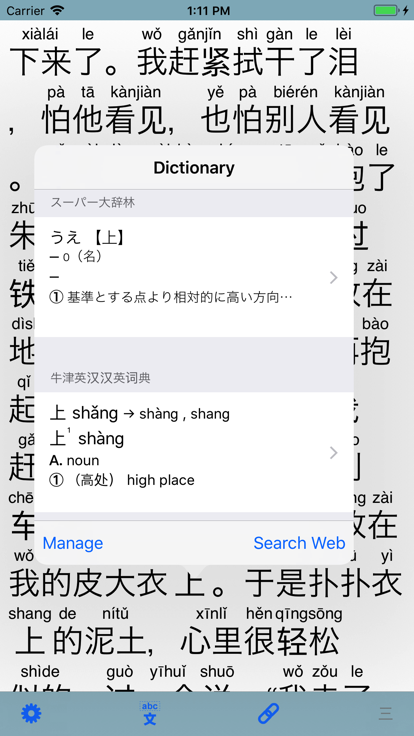
|
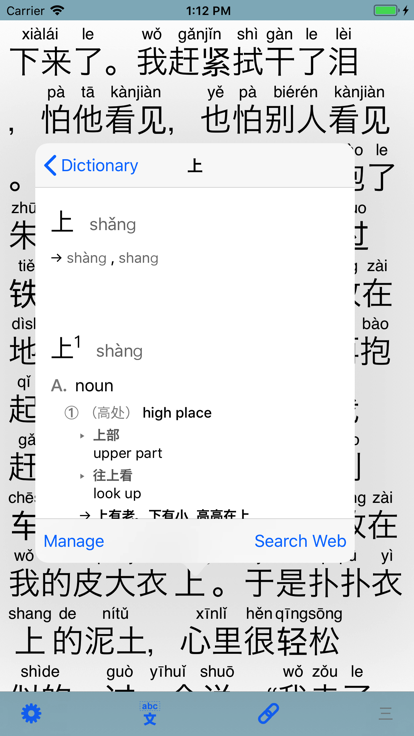
|
All text excerpts pictured on this web-page are from out-of-copyright works:
The Simplified Chinese↔English system dictionary pictured in screenshots is
The Chinese fallback dictionary data is copyright of MDBG's CEDICT, which is licensed under a Creative Commons Attribution-Share Alike 3.0 License.
Other LinguaBrowse-related pages: